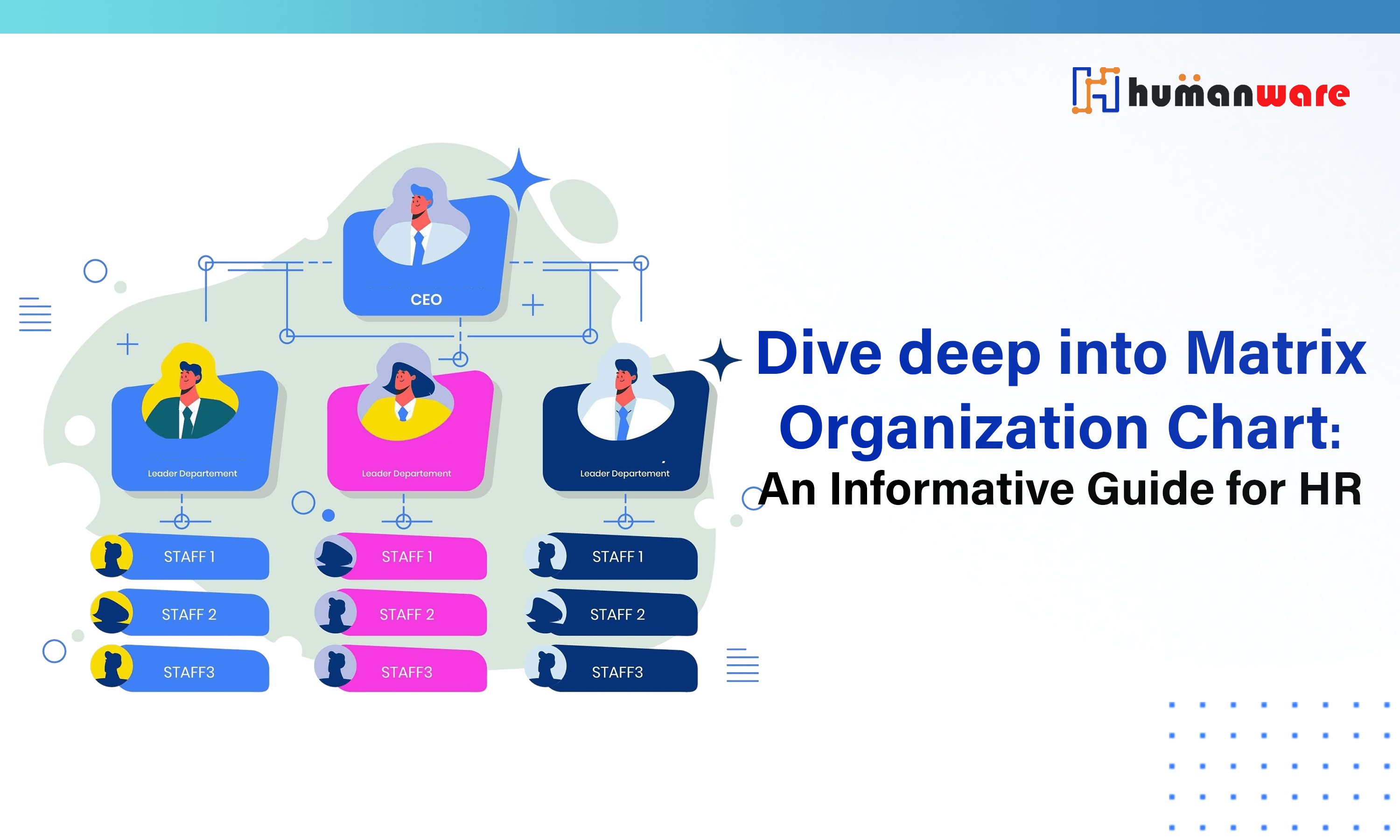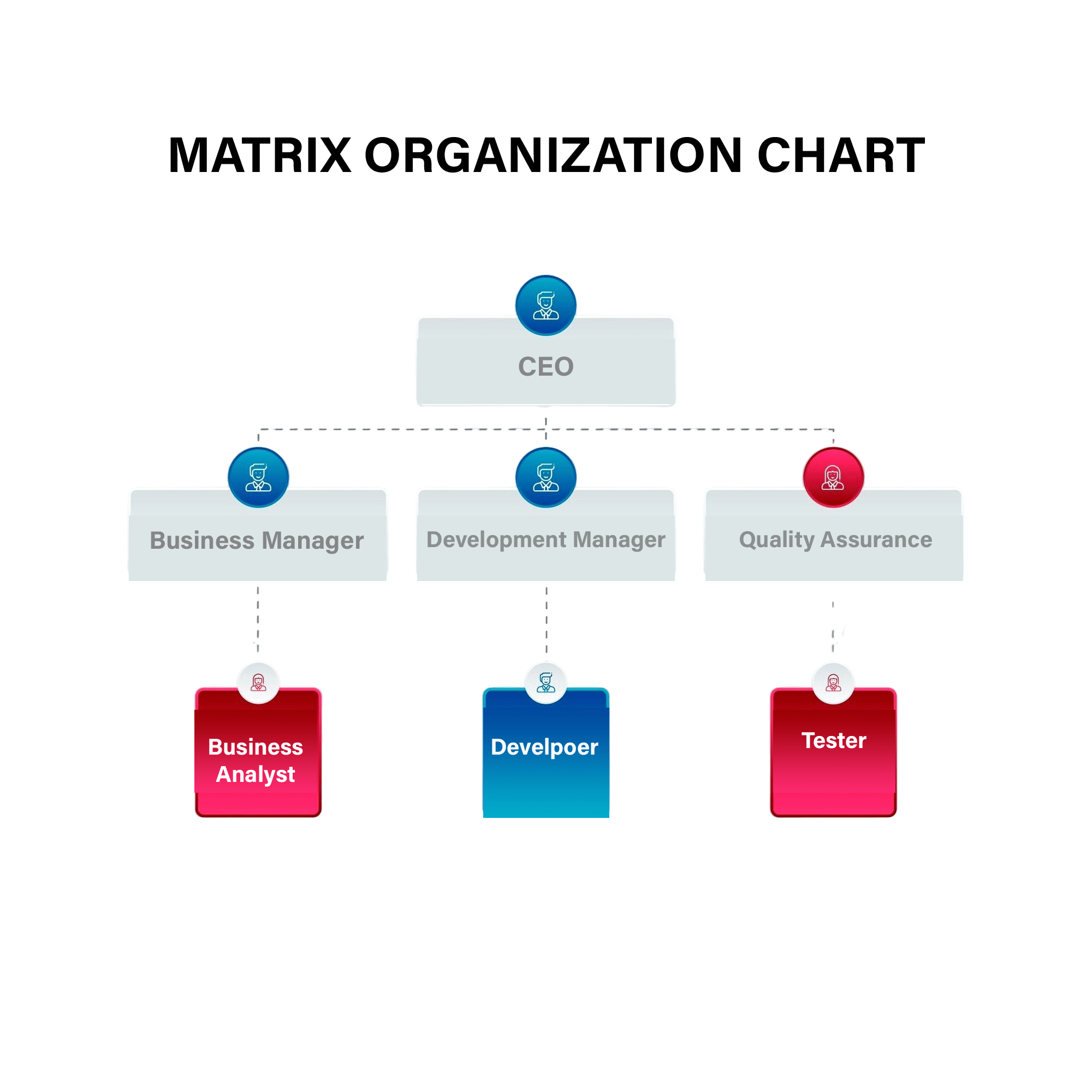
Dive deep into Matrix Organization Chart: An Informative Guide for HR
Dynamic business environment, organizations often need to balance efficiency, innovation, and agility. The matrix org chart is a powerful structural framework that allows companies to manage employees across roles and projects simultaneously. This guide will provide HR professionals with a thorough understanding of matrix charts, their benefits, implementation strategies, and best practices.
What is a Matrix Organization Chart?
A matrix organization is a structure that combines two or more reporting relationships, often mixing functional and project-based reporting lines. Unlike traditional hierarchical structures, employees in a matrix organization report to multiple managers, which improves collaboration and resource allocation across departments.
For example, a marketing employee might also work on a product development team, reporting to both a marketing manager and a project manager. This dual reporting system allows organizations to more effectively utilize talent while promoting cross-functional teamwork.

Key Features of a Matrix Organization Chart
- Dual Reporting Relationships: Employees report to both a functional manager and a project manager.
- Cross-functional Collaboration: Encourages teams from different departments to work together, promoting knowledge-sharing and innovation.
- Flexible Resource Allocation: Resources are shared across different projects and functions as needed.
- Dynamic Workflows: Unlike rigid hierarchies, workflows in a matrix structure can adapt to changing business priorities.
- Complex Decision-Making: Decision-making involves multiple stakeholders, ensuring diverse perspectives but requiring clear communication.
Step-by-Step Guide to Implementing a Matrix Organization Chart
Step 1: Define Organizational Goals
Before implementing a matrix structure, HR and management teams should identify the business goals that the matrix system will support, such as improving collaboration, efficiency or innovation.
Step 2: Identify Key Roles and Responsibilities
Clearly define roles, responsibilities, and reporting relationships to avoid confusion. Identify which roles and projects require shared resources and dual reporting structures.
Step 3: Develop a Clear Communication Plan
Effective communication is key in a matrix structure. Establish guidelines for reporting, meetings, and decision-making processes to avoid conflict between managers.
Step 4: Train Employees and Managers
Provide training to employees and managers to effectively manage dual reporting relationships. Make sure they understand how to balance priorities and resolve conflicts.
Step 5: Implement Technology for Coordination
Use project management and human resources tools to improve workflow monitoring, collaboration, and performance measurement in a multi-manager environment.
Step 6: Monitor and Adjust the Structure
Continually evaluate the effectiveness of the matrix structure. Ask for feedback from employees and managers to make necessary changes.
Benefits of a Matrix Organization Chart
Encourages teamwork across departments, fostering creativity and innovation.
Allows optimal use of talent and resources across different projects, reducing redundancies.
Enables organizations to respond quickly to market changes and project demands.
Employees gain exposure to multiple functions, enhancing their skills and career development.
Employees feel more involved and valued as they contribute to different projects beyond their functional roles.
Best Practices for Implementing a Matrix Organization Chart
1. Establish Clear Authority and Accountability
2. Strengthen Communication Channels
3. Develop Conflict Resolution Strategies
4. Ensure Leadership Alignment
5. Provide Continuous Training
Conclusion
The matrix organizational design is an effective way to balance functional knowledge with project-based flexibility. While it comes with challenges, such as the complexity of dual reporting, when implemented properly, it can deliver significant benefits, including improved collaboration, efficient resource utilization, and increased innovation. For human resources professionals, understanding and effectively managing the matrix structure is critical to an organization’s success in today’s rapidly changing business landscape.
By following best practices and continually refining their approach, companies can maximize the potential of the matrix organization and create a dynamic, high-performing workforce.